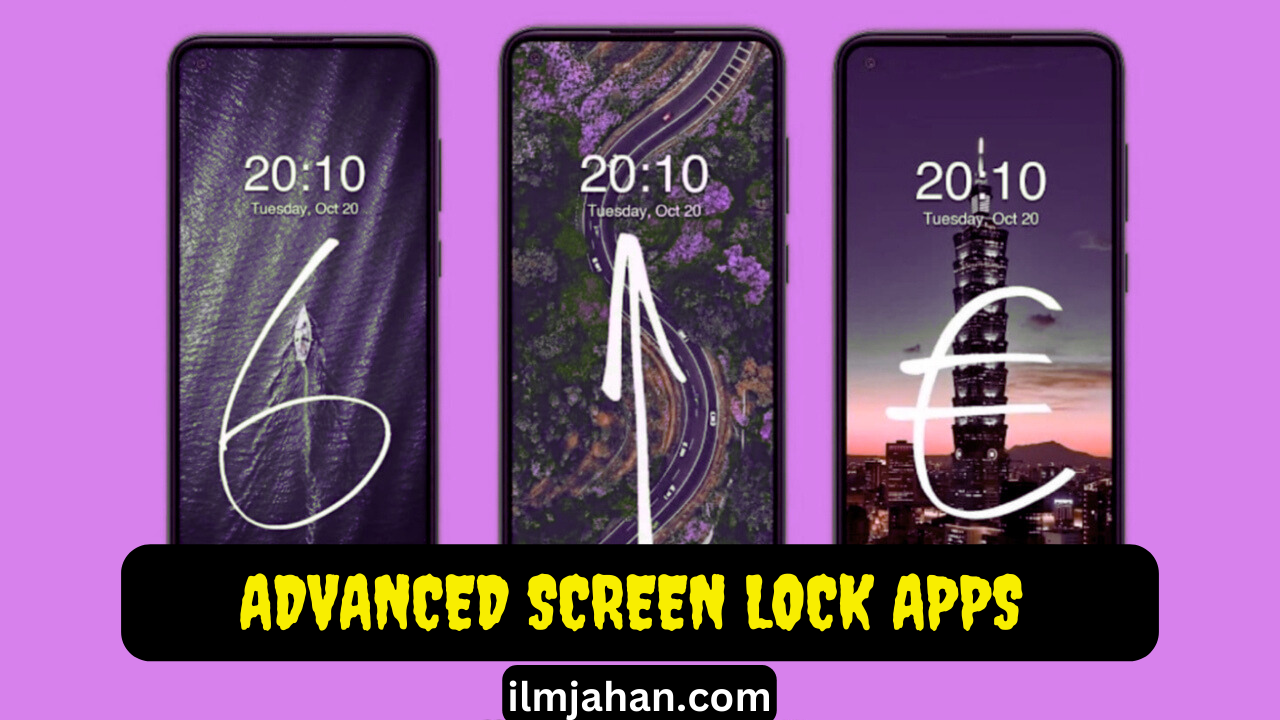Best Screen Lock Apps- With the increasing integration of digital gadgets into our everyday lives, it is more crucial than ever to secure them. These devices carry a lot of personal and professional data, such as work documents, contact lists, financial data, and private communications. This data is vulnerable to cyberattacks in the absence of strong security measures.
Best Screen Locks Ever
More sophisticated screen lock methods are required as traditional passcodes and patterns, which were formerly the norm, are now seen as inadequate.
What Are Advanced Screen Locks
Modern security solutions called advanced screen locks are intended to safeguard gadgets like computers, tablets, and smartphones. These locks employ distinct user identifiers, such as biometric information or behavioral characteristics, in contrast to traditional PINs or passwords. This greatly increases the difficulty of illegal access.
Advanced Screen Locks’ salient features include:
Enhanced Security: These locks reduce the possibility of breaches by using behavioral or biological characteristics.
Convenience: They provide quicker and easier-to-use substitutes for conventional techniques.
Adaptability: A lot of sophisticated systems are able to pick up on and adjust to minute changes, such the development of facial hair or changed typing habits.
Advanced Screen Lock Types
1. The use of biometrics
Iris scanning, fingerprinting and face recognition: Unique bodily traits are used by biometric locks to confirm identification. One of the first biometric technologies, fingerprint recognition looks for the distinctive ridges on your finger. Wet or filthy fingers might reduce its efficacy, despite its speed and dependability.
Face Recognition: This technique creates a map of the user’s face characteristics. By using 3D mapping, sophisticated systems like Apple’s Face ID improve security against tactics like pictures. However, identical twins might cause problems.
One of the safest methods is iris scanning, which examines the complex patterns in the colored portion of the eye. Even though it is dependable, it may be expensive and light-sensitive.
2. Locks with Behavior
Motion sensors and typing patterns: The user’s distinct interaction behaviors are the main focus of these locks.
Typing Patterns: The gadget can identify irregularities and prevent access if the pattern deviates by examining typing pressure and speed.
Motion sensors: These gadgets monitor how users normally handle or move them, identifying any notable variations as possible dangers.
3. MFA, or multifactor authentication
To improve security, MFA combines many techniques, including a password and a fingerprint scan.
Enhanced Complexity: Unauthorized access is much more difficult with this tiered strategy.
Backup Options: Secure access is guaranteed in the event that one technique, such as face recognition, fails.
4. Locks based on proximity
These locks identify adjacent trustworthy devices (like a wristwatch) using technologies like Bluetooth or NFC. When the trusted device is within range, the gadget unlocks itself. To reduce risks in the event that the trusted device is misplaced or stolen, this technique should be used in conjunction with MFA.
How User Experience Is Improved by Advanced Screen Locks
Advanced screen locks improve usability even if their main purpose is security:
Without using your hands Access: Face recognition makes it possible to unlock quickly without using your hands, which is ideal for multitasking.
Instant Speed: Access using fingerprint sensors is almost instantaneous.
Personalization: Behavioral biometrics provide smooth yet secure interactions by gradually adjusting to the user’s behaviors.
Advanced Screen Lock Difficulties
These technologies do have drawbacks despite their benefits:
1. Privacy Issues
Biometric information cannot be altered if hacked, in contrast to passwords. Many businesses have adopted on-device storage in response to concerns about the security and storage of this data, which lowers the risks associated with cloud-based storage.
2. Environmental Restrictions
Some biometric systems’ dependability may be impacted by outside variables such as dim lighting, moist hands, or accessories (like spectacles). These restrictions emphasize the need of backup authentication techniques.
3. Price and Availability
High-end gadgets usually include sophisticated screen locking. Even if their use is growing, less expensive choices could not have these characteristics, which would result in varying degrees of security.
New Developments in Intelligent Screen Locks
Rapid advancements in screen lock technologies are still being made. Among the trends to keep an eye on are:
Continuous Authentication: This system tracks user behavior throughout the session and locks the device if it detects strange activity, rather than only confirming identification upon unlock.
AI & Machine Learning: By learning from user data, AI may improve behavioral and biometric authentication, resulting in ever more precise and secure solutions.
Integration with Smart Wearables: Wearables such as smartwatches may be effortlessly integrated with future devices to provide continuous, hands-free authentication.
In conclusion
Modern screen locks are changing how we safeguard our electronic gadgets. They solve current data protection issues by fusing security with user comfort. These technologies will probably become much more advanced as technology develops, providing everyone with more security.

